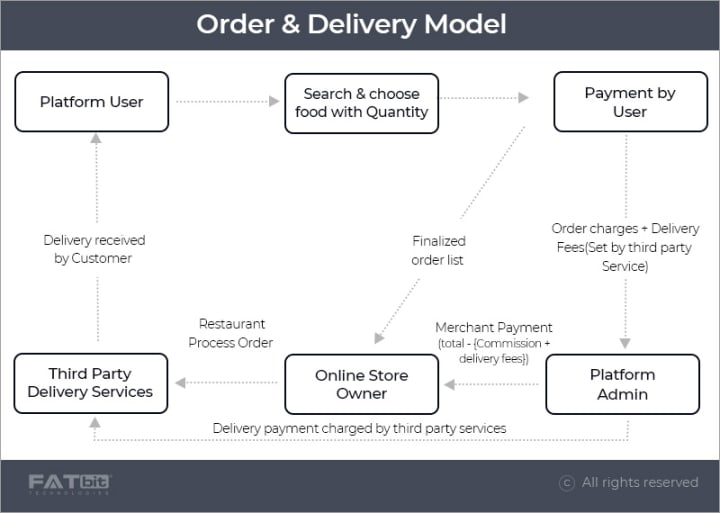Food Delivery Business Models: Types and Advantages
Types of business model to start your online food delivery business.

For entrepreneurs planning to start an online food delivery business, it is highly advisable to be aware of the types of business models that they can start with, their advantages as well as disadvantages.
Looking at the scope of growth and available opportunities to expand your business online, the online food delivery industry has become one of the most profitable markets.
If stats are to be believed, there is a report shared by Uber that states the food delivery market is expected to grow at a rate of 10 per cent a year to be worth $25bn in Europe by 2023.
Strategising the business model is one of the basic requirements for starting a new business. But in order to build a successful business strategy, you need to have clarity in terms of the business model you choose, your target audience, your primary and secondary business goals, and a detailed analysis of the market.
Let’s first discuss in detail the types of food delivery business models and their advantages.
There are two major types of food delivery business models:
1) Aggregator Model
a) Integrated Model
b) Order & Delivery Model
2) Inventory Model

1) A brief about “ Aggregator Business Model” and its Advantages
The aggregator business model allows multiple restaurants to register and function on a single delivery platform. Different local restaurants can register on one single food delivery platform to serve their customers in the areas served by the food delivery platform.
Food delivery platforms like Uber Eats, Just Eat and Delivery Hero, are some suitable examples for this type of business model.

The “Aggregator Business Model” is further classified into two types:
a) The Order and Delivery Model
b) Integrated Model
a) The Order and Delivery Model : As per the “Order and Delivery Model,” there are three major entities involved in this business model:
- The Admin (the owner of the online food delivery platform)
- The Merchants (the restaurant owners)
- The Delivery Service Providers ( logistic company)
If you choose this type of business model, the delivery of the food orders will be taken care of by third party delivery service providers. The delivery charges on orders are set by the third-party food delivery service providers whereas the order is received and prepared for delivery by the restaurant/food business itself.
The Advantages of Order & Delivery Model
- The order and delivery model saves your investment in employing a delivery fleet.
- As the food delivery is taken care of by the third-party logistics service, as an admin you can ensure on-time and efficient food delivery services to your customers.

Suggested Read: How To Start a Food Delivery Business like Just Eat or Delivery Hero
b) Integrated Model : As per the “Integrated Model,” the delivery of the food order can be managed by both:
- The admin of the food delivery platform
- The restaurant from where the food has been ordered by the customer
It is considered a flexible food delivery business model. This is suitable for those restaurants that already have their own pool of delivery agents and are also registered on the third-party food delivery platform that provides delivery service.
The Advantages of Integrated Model:
- The integrated business model allows the restaurants that may or may not have delivery staff/agents to be on the food delivery marketplace and function effectively.

2) Inventory Business Model
In the inventory business model, the online food delivery business does everything in-house. Everything from accepting orders, to delivering the orders to the customer’s everything is managed by one entity i.e. the online food delivery business itself.
This business model best suits the food businesses with multiple restaurant chains for example Domino's, McDonald’s and other similar businesses like these.
The Advantages of Inventory Model:
- As a business owner, you do not have to rely on a third-party food delivery platform to receive orders. You have your own ordering and delivery service for your customers. Like Domino’s has its own app.

So, we discussed the various types of business models that you can choose to start an online food delivery business. The business model defines the workflow of your food delivery business to a great extent. Therefore, it is of utmost importance to choose a business model that meets your business requirements.
For more insights related to the online food delivery business models, you can read the following blog: Online Food Delivery Business Models 2021- A Detailed Guide






Comments (1)
There are different business models for food delivery. Today, apps like Uber Eats are the most popular, so many are interested in ways to create a clone of the app. Must-have Uber Eats features for customers: Registration and profile management Search field Order placement Payment Order tracking Notification Rating and reviews https://www.cleveroad.com/blog/build-app-like-uber-eats/